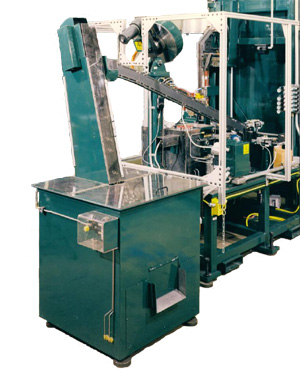

Custom Bearing Assembly Machines
Ingersoll Production Systems has designed and built numerous versions of bearing assembly machines over the past 90 years. These automated assembly machines are designed for specific applications and vary from manual operation to fully automatic.
Needle Bearing Machines:
The automation machine shown on the right is an example of an automatic single end needle bearing machine.
The auto sequencing is as follows:
- Loader pushes the part into the nest
- Nest is moved in front of insert unit
- Insert unit loads needles into the gear housing
- Nest with the finished part returns to load/unload position
- Loader pushes the new pinion in and finished part out
This entire automated assembly process takes just 3 seconds to complete. At this rate, operating at 100% efficiency, the needle bearing machine can produce 1,200 parts per hour.
The dual-station, automatic needle bearing assembly machine (bottom right) assembles two rows of needles with a washer in between each set at a rate of 1,200 parts per hour. As part of the automated assembly process, needles can be coated with grease, skew-locked, or a plug can be inserted.
Needle Cup Machine
This automated needle cup-loading assembly machine was designed to assemble the bearing cup, bearing cup needle, bottom spacer, optional O-ring and rubber seals for universal joints.
This machine performs the following operations:
- Automatically assemble and retain spacer into bottom of bearing cup with grease.
- Automatically assemble and retain needle bearings into bearing cup with grease.
- Automatically assemble rubber seal onto bearing cup after needle bearing insertion.
- Automatically install grease onto inner ID groove of rubber seal.
- Optional insertion of rubber O-ring after needle insertion.
At 100% efficiency, 1,200 pieces per hour can be produced on this automated assembly machine. This translates into an impressive 3-second cycle time.
